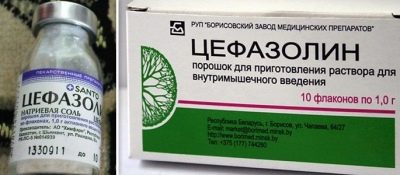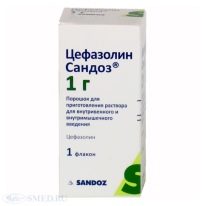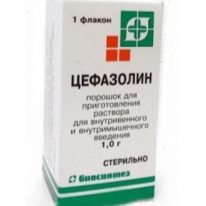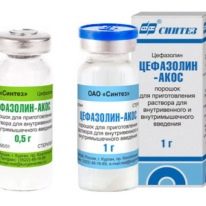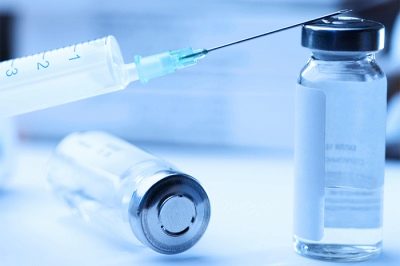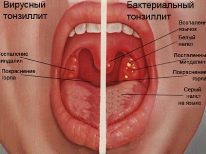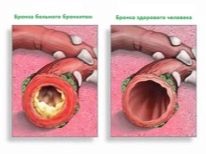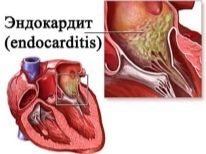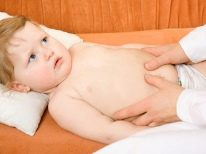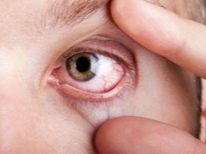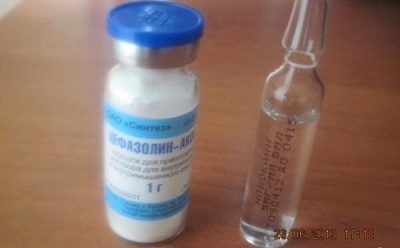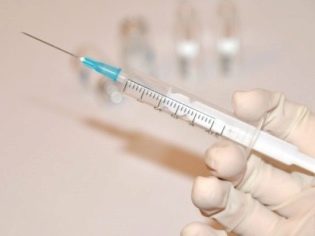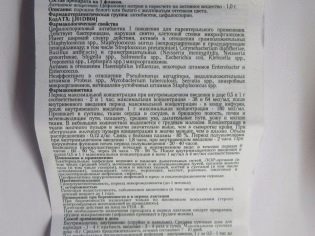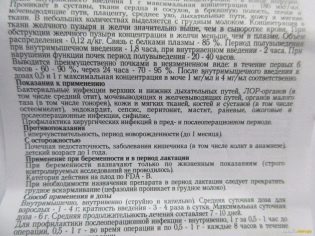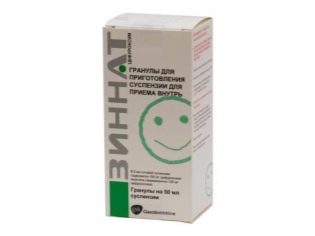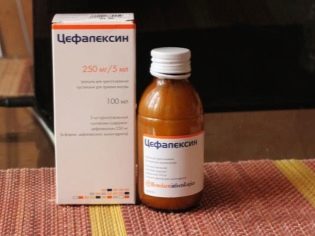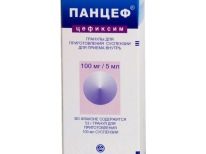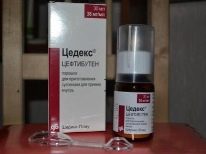Cefazolin for children: instructions for use
Cefazolin is an antibacterial drug from the cephalosporins group that represents the first generation of such drugs. It is used only in the form of injections, because when released into the digestive tract, such a drug is actively destroyed, it does not have time to be absorbed into the blood. He has a fairly extensive range of antimicrobial effects, so this remedy is prescribed for various infections in adults, and it is often prescribed in childhood.
Release form
"Cefazolin" is released only in an injectable form, therefore, tablets, suspensions, capsules or syrup with this name do not exist. This medicine is produced by many pharmaceutical companies from Russia, India, China, Switzerland and Belarus.
Cefazolin Sandoz is manufactured in Austria, and Cefazolin-AKOS is manufactured by the Russian company Synthesis. These drugs, although they have an additional word in the title, do not differ in their properties from drugs that are simply called “Cefazolin”.
The drug is a hermetically sealed glass vials with white powder, sometimes with a yellowish tinge. It is sold as one, or 5 or 10 bottles in one box. Sometimes a solvent is added to the drug in 2 ml and 5 ml ampoules. The solution prepared from powder can be used for intramuscular and intravenous injections.
Composition
The action of the drug causes the same name ingredient, presented in the powder in the form of Cefazolin sodium. One bottle most often includes 1 gram of cefazolin, but many pharmaceutical companies offer a 500 mg antibiotic in one bottle. In addition, some manufacturers additionally produce bottles containing 250 mg of cefazolin. There are no other substances in the medicine. The solvent attached to some of the bottles is sterile water.
Operating principle
Cefazolin is able to destroy pathogenic microbes that have caused an infectious process, destroying their cell walls. The preparation is detrimental for golden and epidermal staphylococci, hemolytic and pyogenic streptococci, Escherichia coli, pneumonia diplokok, Salmonella, anthrax pathogens, Neisseria, Salmonella and many other microorganisms. However, such a drug is ineffective if the disease was provoked by viruses, protozoa, fungi, Mycobacterium tuberculosis or Pseudomonas aeruginosa.
Indications
Since Cefazolin can destroy various types of bacteria, such a means is required during the infection process in various organs. Nowadays, Cefazolin shots are prescribed for:
- bronchitis;
- bacterial pneumonia;
- infected bronchiectasis;
- lung abscess;
- bacterial inflammation of the middle ear;
- angina;
- pyelonephritis;
- urethritis;
- skin infections;
- biliary tract infections;
- osteomyelitis;
- eye infections;
- endocarditis;
- sepsis;
- pelvic infections;
- peritonitis and many other diseases.
The drug can be prescribed and prophylactically, for example, to prevent suppuration after surgery on the joints, gall bladder or heart. Some ENT doctors include "Cefazolin" in prescriptions for complex nasal drops, which are used for prolonged bacterial rhinitis, adenoiditis, and sinusitis.
From what age is appointed?
"Cefazolin" is contraindicated in newborns, and in young patients between the ages of 1 and 12 months is prescribed with caution (mainly for serious infections that threaten the life of the infant) and only under the supervision of a physician.
Contraindications
"Cefazolin" can not be prescribed for allergies to such a drug and any other cephalosporin antibiotic. If the patient showed hypersensitivity to penicillin preparations, the introduction of Cefazolin requires increased attention, as cross-tolerance is possible.
If the child has kidney disease, the drug is used with caution and, as a rule, the daily dosage is reduced. Medical supervision is also required in the treatment of children with bowel disease.
Side effects
The drug can cause allergic reactions such as drug fever, itching, airway spasm, skin rash, joint pain and other symptoms. In addition, the treatment with Cefazolin often exhibits negative symptoms of the digestive system - vomiting, heartburn, inflammation of the tongue, loss of appetite, nausea, diarrhea, and others.
In rare cases, the drug provokes candidiasis, a decrease in the number of blood cells, colitis, congestive jaundice, dysbacteriosis and other problems. At the injection site often there are painful sensations and the appearance of compaction is possible, and when injected into a vein, phlebitis can develop.
Instructions for use
The drug is injected either into muscle tissue or into a vein. First, the solvent is added to the contents of the vial, and then the preparation is collected with a syringe and the injection is given. If intramuscular injection is needed, the medication should be administered to the part of the body where the muscle tissue is well developed, for example, in the shoulder or thigh.
When administered intravenously, the drug can be administered slowly in a jet (if the dosage is less than 1 g) or put an IV for 20-30 minutes (if necessary, enter more than 1 g).
The solution is prepared before manipulation, but in rare cases it is permissible to dilute the powder in advance or leave some of the diluted medicine for the next injection (the solution can be stored in the refrigerator). Before introducing "Cefazolin" to a child, you need to make sure that the diluted medication is clear and there is no sediment, no turbidity or any impurities.
If the prepared solution is slightly yellowish, this is normal and does not indicate damage to the antibiotic. But the opaque medication is unacceptable.
To inject “Cefazolin” into the vein of a jet, sterile water for injection is added to the powder in a volume of 10 ml. For droppers use 50-150 ml of saline, glucose solution or other solvents, which are permissible to enter drip.
For intramuscular injections of “Cefazolin”, it is recommended to dilute the medicine with sterile water, but due to the pain, the use of “Lidocaine” or “Novocain” is also acceptable. Such anesthetics are used at the rate of 2 ml per 500 mg of cefazolin. The injection is performed like this.
- The end of the ampoule with the anesthetic medicine is cut and gently broken off.
- A sterile syringe is opened, a needle is put on it and the needle is lowered into the open ampoule of Novocain or Lidocaine.
- Pick up the right amount of solution and remove the syringe.
- Remove the metal lid from the bottle of “Cefazolin”, pierce the rubber cap with a needle and slowly squeeze the liquid medicine into the vial.
- Without removing the syringe, shake the bottle vigorously to the sides to completely dissolve the powder.
- Pick up the prepared solution and remove the syringe.
- Turning the syringe with the needle up, tap your finger on the plastic surface and then squeeze out the air that has formed.
- Do intramuscular injection.
The weight and severity of the infection affects the dosage of the drug for children:
- If the disease is a lung, then 25-50 mg of cefazolin is needed per 1 kg of body weight of the baby (a more precise amount is determined by the doctor).For example, a child weighs 12 kg, then the daily dosage of the medicine for him will be 300-600 mg of antibiotic, which is divided into 2-4 injections.
- With moderate flow, the weight of the small patient in kilograms should also be multiplied by 25-50. The resulting amount of the drug is used during the day - it is divided into 2-4 injection.
- If the disease is severe, then the dosage of Cefazolin is increased to 100 mg / kg. The calculated daily dose is divided into two or three injections.
The duration of treatment with Cefazolin is determined by the severity of the disease, but usually the medication is prescribed for a course of 7 to 14 days. Prick the drug for less than five days should not be, because in this case, the pathogen is not completely destroyed and can become resistant.
If the medication is prescribed for prophylactic purposes, the first injection is made half an hour before the operation, and the second - during the intervention. After the operation is completed, the injections are repeated on the first day every 6-8 hours.
Interaction with other drugs
“Cefazolin” is not prescribed with aminoglycoside antibiotics, as this will increase the risk of a negative effect of the treatment on the kidneys. Do not use this medication with other bacteriostatic drugs (for example, with sulfonamides or tetracyclines), as they have antagonism.
In addition, this antibacterial agent can not be used with diuretics and anticoagulants.
If you assign "Cefazolin" together with drugs that block tubular secretion, its concentration in the blood will increase, which can provoke toxic reactions.
Terms of sale
To purchase Cefazolin at a pharmacy, you must first obtain a prescription from your doctor. The cost of the drug affects the manufacturer, dosage and number of bottles in a pack. One bottle can cost as much as 15-20 rubles, and 90 rubles.
Storage conditions
The shelf life of Cefazolin powder is 2 or 3 years, the finished solution is 24 hours. Keep unopened vials of powder is recommended at a temperature below +25 degrees out of the reach of small children. Cooked liquid preparation should be refrigerated.
Reviews
The treatment of children with Cefazolin is mostly positive, noting that it is an effective antibacterial agent. It is often used in the absence of a positive effect from treatment with penicillin antibiotics (for example, with amoxicillin preparations). According to moms, injections quickly helped to get rid of the symptoms of bronchitis (cough, fever), otitis, sore throat and other infections.
The main drawback of the drug is its injectable form and severe pain injections. In addition, in a few negative reviews complain about the occurrence of an allergic reaction or the lack of a therapeutic effect, when the microorganism was found to be resistant to such an antibiotic.
Analogs
If you need to replace "Cefazolin", the doctor may prescribe another medicine that belongs to the group of cephalosporins, for example, the following.
- «Cephalexin». This drug also represents the first generation and is represented by a suspension that can be used from birth, as well as capsules that are prescribed to children over 3 years old.
- "Cesolin". Such an Indian-made antibiotic is a complete substitute for Cefazolin, because it contains the same active compound at a dosage of 500 mg and 1 g. It is also available in vials and can be discharged to children older than 1 month.
- «Zinnat». This medicine belongs to the second generation, and cefuroxime acts as its active ingredient. The drug is available in granules (prepared from them suspension written out to babies from three months of age) and tablets in the shell (they can be used from 3 years).
- «Cedex». This third-generation antibiotic contains ceftibuten and can be administered as a suspension to babies older than 6 months. It is also available in capsules used in the treatment of patients over 10 years old.
- «Pancef». This medicine also represents the third generation and works thanks to cefixime. It is produced in the form of granules from which make an orange suspension. It is used for infections in children older than six months.
- «Ceftriaxone». Such third-generation cephalosporin is produced only in an injection form. It is prescribed for pneumonia, sepsis, salmonellosis, peritonitis, and other serious infections. The drug is allowed at any age, so it is used even in newborns.
Reviews of the doctor about the drug "Cefazolin", his testimony, the rules of admission, side effects and analogues, see the following video.

